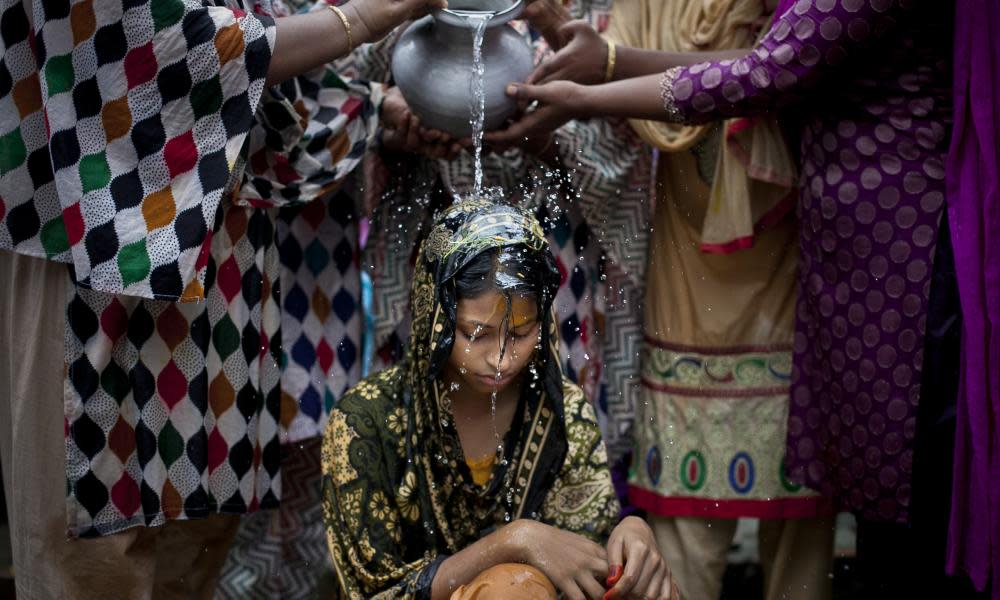Child marriage will cost the world $4tn by 2030, researchers warn

Ending child marriage could add more than $4tn to the global economy, curb population growth and transform the lives of millions of young women worldwide, claim researchers.
A study by the World Bank and the International Center for Research on Women, the first to quantify the financial cost of the practice, suggests that eradicating child marriage would save governments money while enabling girls to complete their education and get better jobs.
“This research provides crucial evidence showing that child marriage doesn’t just impact the lives of the 15 million girls married every year, but also has a major negative impact on the economic development of the countries in which these girls live,” said Lakshmi Sundaram, executive director of Girls Not Brides, a coalition of organisations committed to ending child marriage.
“Governments and other policymakers should be spurred on by this research to commit additional energy and resources to ending child marriage by 2030. By ridding the world of child marriage, we can help alleviate poverty and ensure that girls everywhere have access to a brighter future.”
Though the global child marriage rate is in decline, every two seconds a girl under the age of 18 becomes a bride. Niger has the world’s highest child marriage rate, with 76% of women married before reaching 18. In India, more than 26 million women became brides before 18.
Across the 25 countries with the highest number of child marriages, one in five women aged 18-22 had her first child before 18.
The researchers suggest gains in annual welfare costs from lower population growth could eventually reach more than $500bn a year.
Ending child marriage, a target of the sustainable development goals adopted by the UN in 2015, would have major benefits for governments and donors, said Suzanne Petroni, a senior director at the International Center for Research on Women.
“One of the ways in which we thought we could potentially affect more significant change by governments and donors was by helping them understand the bottom line – what does child marriage cost to their economies?” said Petroni, one of the report’s authors.
“And as finance ministers and others saw the findings and realised there is actually a financial cost to our country’s development as a result of child marriage, they might take it more seriously and provide investments to end the practice.”
The report is based on three years’ research using national surveys, international statistics and interviews, and was funded by the Bill & Melinda Gates Foundation, the Children’s Investment Fund Foundation, and the Global Partnership for Education.
Looking at data from 15 countries with high child marriage rates, the report found that a girl marrying at 13 will have 26% more children over her lifetime than if she had married at 18 or later. Researchers calculated that ending child marriage would reduce national fertility rates by 11%.
The study estimated that ending child marriage would save billions of dollars each year, reaching $566bn by 2030 due to reduced population growth. Fewer deaths and reduced stunting among children under five years old would also save billions. Ending all early childbirths could save up to $708bn by 2030.
Ending child marriage would also improve women’s expected earnings, as girls are likely to leave school when they marry.
Benefits would be felt particularly strongly in poorer segments of populations, said the researchers, as young girls in poverty are more likely to marry early than girls from other socio-economic groups.

 Yahoo News
Yahoo News 
